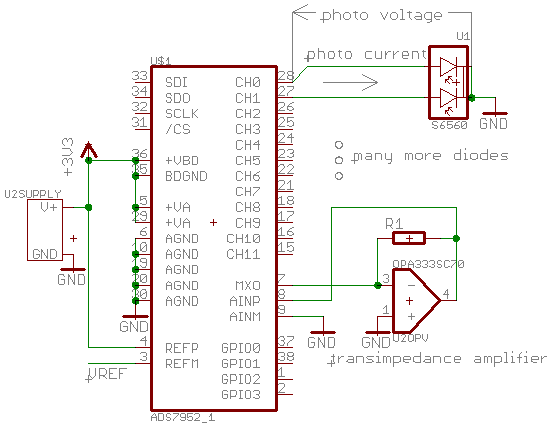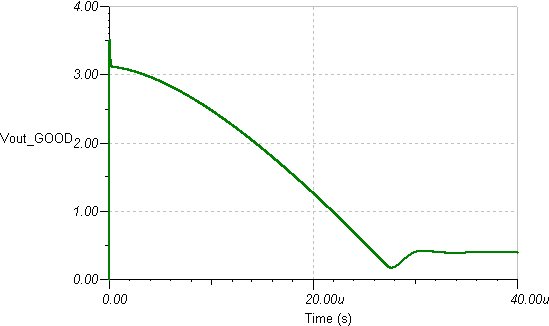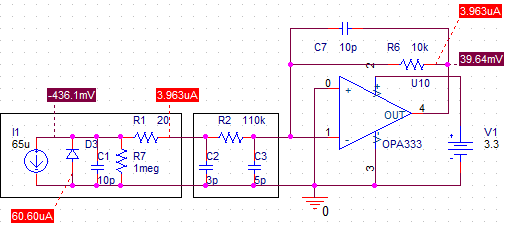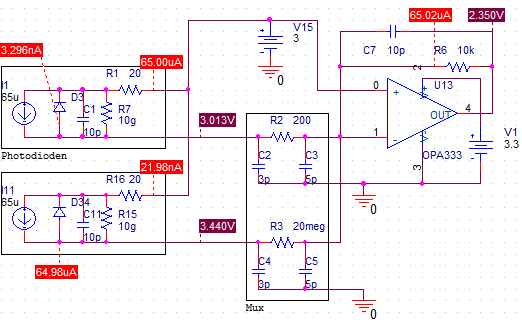Hi,
I'm here again with a new problem. I'm using a ADS7952 to measure the photocurrent of 12 photodiodes (two in one package, with a common cathode). Because i want a linear relation between light intensity and photo current i try to use a transimpedance amplifier, and because I have to save board space and power I try to use the TIA between the MXO and the AINP of the ADS7952:

The OP amp with the feedback resistor keeps the MXO at ~0V. The problem: if a enable, CH0, there is a voltage drop of ~250mV between MXO and CH0, at a photo current of ~3.8µA. If I use the TIA without the ADS7952 (at the same lightning conditions) the photo current is ~45µA.
The 3.8µA photo current and the 250mV voltage drop equals a resistance of 65kOhms, which is much more than the 200 Ohms specified in the datasheet (p. 42, fig. 59).
Am I doing it wrong, or is ther a more fundamental problem with pulling current from multiplexer inputs?
Best regards,
Paul Roßmann






